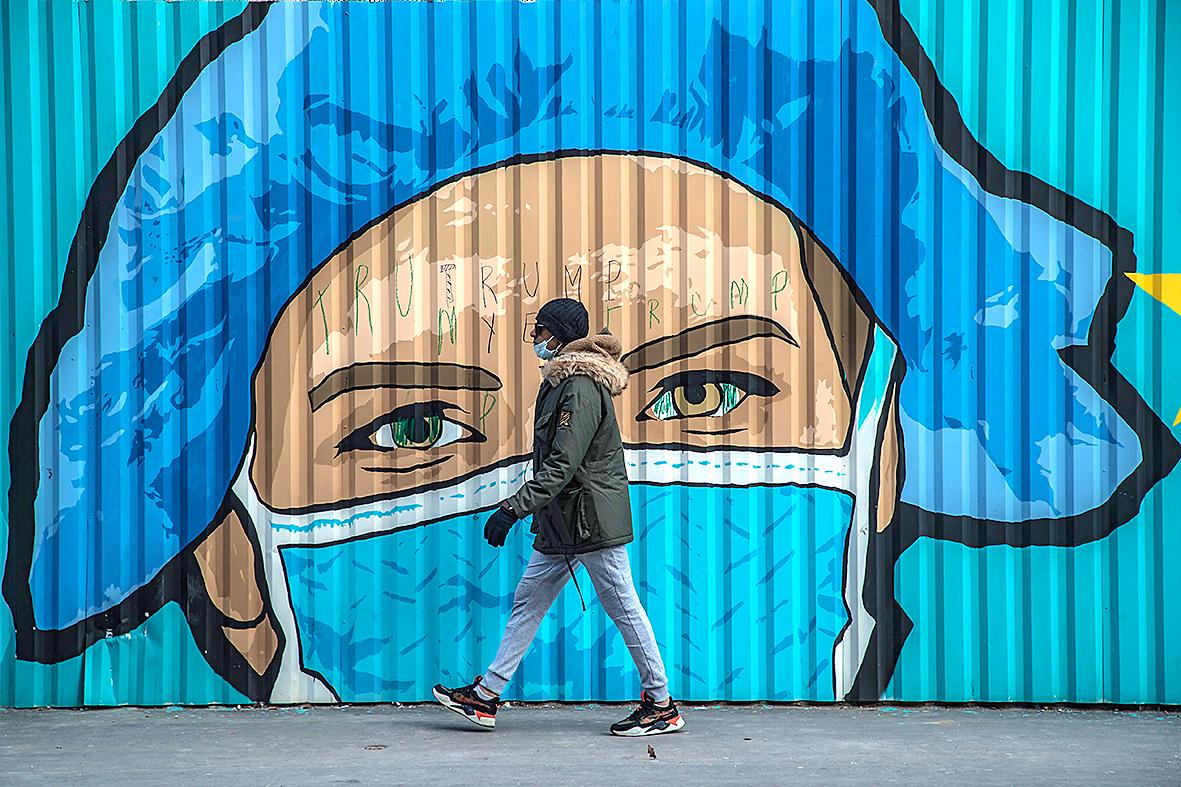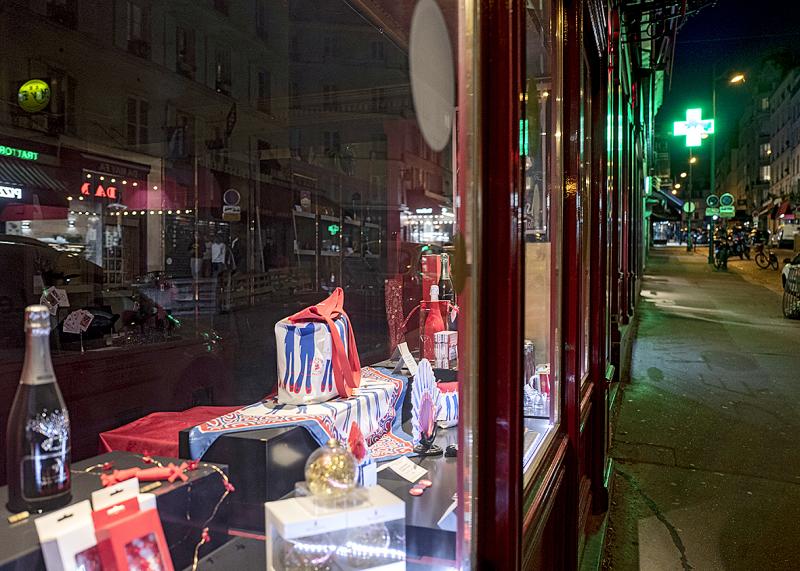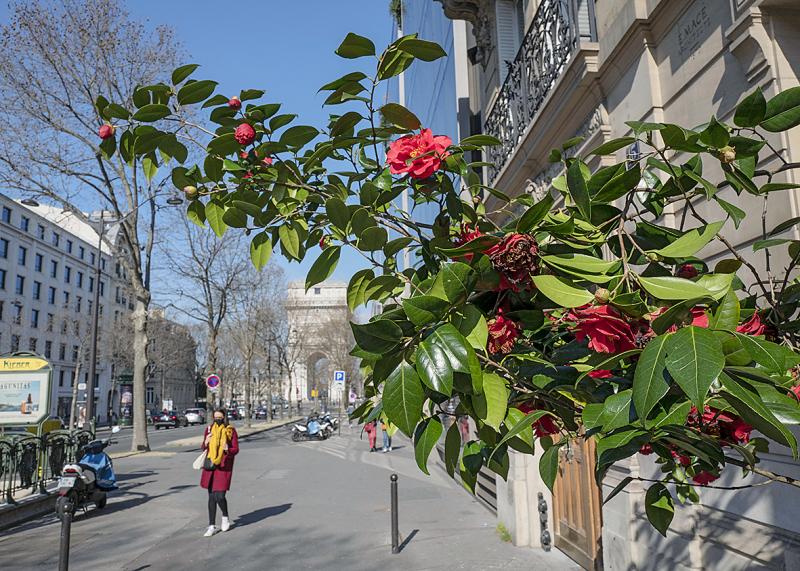Charles Baudelaire, whose 200th birthday yesterday was celebrated with stamp issues, new editions of his poetry and virtual events, is arguably more famous for his concept of the flaneur — an aimless stroller or ambler — than for his writing. That’s partly because reading his volumes Les Fleurs du Mal or Le Spleen de Paris requires a degree of application, but also because the idea of an individual moving through the city streets and finding aesthetic pleasure in the teeming crowds, appeals to us and continues to chime. At least, it did until spring last year, when the crowds were told to stay at home.
But even in a ghost city, it’s possible to think and walk like a flaneur. Rainer Hanshe has translated several of Baudelaire’s books into English — including Belgium Stripped Bare, about the French author’s visit to Brussels just before it was struck by a cholera epidemic.
He notes: “The flaneur is a figure who, while immersed in the urban throng, is simultaneously separate from it. If more empty than not, our streets are still to some degree populated, and we can engage in the form of communion that Baudelaire referred to as a mysterious intoxication.”

Photo: EPA-EFE
This involves trying to get inside the heads of others — an act of ecstatic empathy that “peoples” the solitary walker’s imagination. It’s a radical idea that envisions the mind as a sponge or, perhaps, a social media channel. Baudelaire’s most memorable phrase for the flaneur was “a kaleidoscope gifted with consciousness.”
Some of his ideas need updating. The flaneur might be “a prince enjoying his incognito wherever he goes,” but what about the princesses? Janet Wolff of the University of Manchester has written of the “invisible flaneuse,” of “respectable” women’s absence from public arenas in modern cities. In her 2016 book Flaneuse: Women Walk the City, Lauren Elkin calls for women to take to the streets, following the example of radically reflective female walkers from Virginia Woolf and Jean Rhys to Rebecca Solnit.
The German philosopher Walter Benjamin expanded Baudelaire’s ideas about the flaneur, adding to the myth of Paris as the archetypal modern metropolis. Some of TS Eliot’s poetic evocations of London sprang from his readings of Baudelaire.

Photo: EPA-EFE
But one can roam and ruminate equally in Cardiff, Dundee, Liverpool or Belfast. As urban consumer culture spreads, in the shape of delivery vans, Deliveroo bikes, “artisan” coffee shops and the like, you can arguably be a flaneur (there’s also a verb, flaner, to stroll) in towns, villages and countryside.
But to do so requires discipline. Here are 10 Baudelairean suggestions for exploring the ghost city.
READ THE CITY

Photo: AP
In his poem Le Soleil, Baudelaire writes of “Stumbling on words as on cobblestones.” To say we should treat the city as a text sounds pretentious, but not if we think about street names, tree species and the colors of the brickwork, and unearth forgotten plaques and historic sites. The plaque for Tyburn gallows at Marble Arch is close to a heavily trafficked spot, but few stop to study it. Even famous monuments can be looked at from new angles. Baudelaire wrote about marble statues as if they were sentient. What emotions do they stir in you? Who might have been here before you?
NO RUSH HOURS, SO NO HURRY
For some translators, “idler” is the best equivalent of flaneur. Ambling is best enjoyed slowly, daydreaming. “A dandy does nothing,” Baudelaire wrote. The pandemic-struck city, with its permanent Sunday-state, is ideal for leisurely meandering. Use it while it lasts.

Photo: AP
THE NIGHT WALK
Noctambulism is a magical pursuit, as we swap sleep and ordinary dreams (or those garish ones we’ve all been having during lockdowns) for the dreamscape of the city. Artificial light, the absence of others, prowling foxes and the mystery of shadows recast familiar places as strange and special. To see the everyday anew is the ultimate goal of flanerie.
TURN OFF GADGETS
If there’s one thing that kills the art of flanerie, it’s the smartphone; even worse are apps that count steps. Why look down when you can look up and about? If you want a soundtrack to walk to, visit the University of Birmingham’s Baudelaire Song Project and pick a slow-tempo chanson.
WINDOW SHOPPING
The grand iron-and-glass arcades of Paris inspired Walter Benjamin, who was fascinated by the well-stocked magasins, the “temples” of capitalism. Window-shopping has not been banned, and you can still read the signage, promises, buildings, fashions. We are witnessing the gradual abandoning of the arcades; Benjamin would have been spellbound. Even Liverpool One, opened in 2008, suddenly seems old and semi-redundant.
STOP FOR A SIT-DOWN
Cafes shut? Pubs shuttered? There are always benches and steps, parks and plazas, as well as doorways to loiter in. There’s no shame in sitting. In his dazzlingly erudite book, The Walker: On Finding and Losing Yourself in the Modern City, Matthew Beaumont makes a convincing argument that convalescence — the state between health and illness — is the perfect mode for discovery as it makes us raw and sensitive but also disconnected. If you’re recovering from coronavirus, you may actually be convalescing. As COVID-19 recedes, our cities are convalescing, too.
GET SURREAL — OR DRUNK
Philosopher Guy Debord, who described walking as a derive (drift), was influenced by the surrealists, who used chance and games to develop new ideas and perspectives. One of Debord’s friends walked through a region of Germany following a map of London. Why not walk around an empty Manchester using a cut-up map reassembled at random?
In his 1989 book Panegyric, Debord recounts wandering around Europe’s great cities trying different alcoholic drinks, including pints of mixed (half-mild, half-bitter) in England. How about a hip flask of absinthe in Aberdeen? In 1955, Debord developed the idea of psychogeography, which was later taken up by Iain Sinclair, Will Self and others.
REINVENT THE CITY
The Paris of Baudelaire and Benjamin is long gone. A flaneur today has to reckon with traffic, overtourism, selfies “in Sartre’s favorite cafe” and soulless spaces like La Defense. The emptying of our cities, and their reinvention post-pandemic has every chance of being an improvement on the hyperinflated housing, glass-and-steel phallocentricity, pseudo-public piazzas and rank consumerism of the late-20th-century metropolis. Perhaps we are ambling into a brighter future?
Stockton-on-Tees’ projected giant green space, which will replace high street shops and provide residents with a wonderful patch of rus in urbe when it opens in 2025, harks back to the Victorian era of city parks.
PICK THROUGH THE RUBBISH
Baudelaire writes of Paris’s chiffoniers or ragpickers, marginalized proto-recyclers of the city that ignores and shuns them. Benjamin developed this into the idea of poet-as-ragpicker. The ragpicking flaneur can construct his mental collage from the messy, chaotic, ugly, dirty discarded things found around the city. Dustbins and gutters can tell us more than museums.
Keyworkers — including refuse collectors — see more of the “real” city than most. UK cities have some of the most extensive and storied post-industrial landscapes in the world, and most are to be found far from honeypots and theme-park “historic centres”.
KEEP NOTES, MAKE SKETCHES
Baudelaire was not the first — or the last — wandering philosopher-writer. He took key ideas from Edgar Allan Poe, and authors as varied as Charles Dickens, Marcel Proust, George Sand (cross-dressing to penetrate male-dominated milieux), James Joyce, Jorge Luis Borges, Franz Hessel, Ralph Ellison and Edmund White have contributed to the tradition.
The flaneur appears in paintings by many artists, including Degas and Manet (while Edward Hopper painted like one), and can be seen ghosting through the work of film-makers such as Agnes Varda and Patrick Keiller. Much of the best travel writing benefits from a quizzing gaze, intellectual restlessness and a degree of distance — see Caryl Phillips’ The European Tribe.
The empty city is waiting to be filled with new words.

This month the government ordered a one-year block of Xiaohongshu (小紅書) or Rednote, a Chinese social media platform with more than 3 million users in Taiwan. The government pointed to widespread fraud activity on the platform, along with cybersecurity failures. Officials said that they had reached out to the company and asked it to change. However, they received no response. The pro-China parties, the Chinese Nationalist Party (KMT) and Taiwan People’s Party (TPP), immediately swung into action, denouncing the ban as an attack on free speech. This “free speech” claim was then echoed by the People’s Republic of China (PRC),

Exceptions to the rule are sometimes revealing. For a brief few years, there was an emerging ideological split between the Democratic Progressive Party (DPP) and Chinese Nationalist Party (KMT) that appeared to be pushing the DPP in a direction that would be considered more liberal, and the KMT more conservative. In the previous column, “The KMT-DPP’s bureaucrat-led developmental state” (Dec. 11, page 12), we examined how Taiwan’s democratic system developed, and how both the two main parties largely accepted a similar consensus on how Taiwan should be run domestically and did not split along the left-right lines more familiar in

Most heroes are remembered for the battles they fought. Taiwan’s Black Bat Squadron is remembered for flying into Chinese airspace 838 times between 1953 and 1967, and for the 148 men whose sacrifice bought the intelligence that kept Taiwan secure. Two-thirds of the squadron died carrying out missions most people wouldn’t learn about for another 40 years. The squadron lost 15 aircraft and 148 crew members over those 14 years, making it the deadliest unit in Taiwan’s military history by casualty rate. They flew at night, often at low altitudes, straight into some of the most heavily defended airspace in Asia.

Many people in Taiwan first learned about universal basic income (UBI) — the idea that the government should provide regular, no-strings-attached payments to each citizen — in 2019. While seeking the Democratic nomination for the 2020 US presidential election, Andrew Yang, a politician of Taiwanese descent, said that, if elected, he’d institute a UBI of US$1,000 per month to “get the economic boot off of people’s throats, allowing them to lift their heads up, breathe, and get excited for the future.” His campaign petered out, but the concept of UBI hasn’t gone away. Throughout the industrialized world, there are fears that